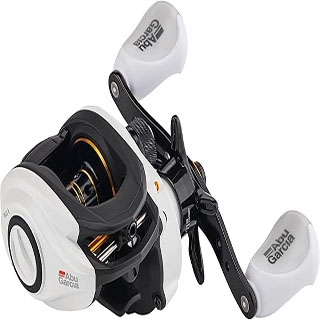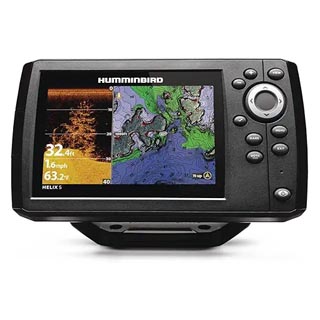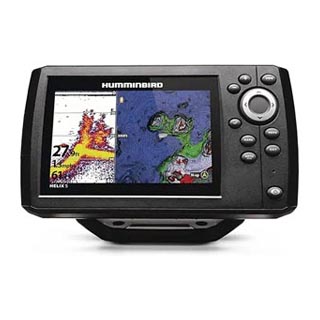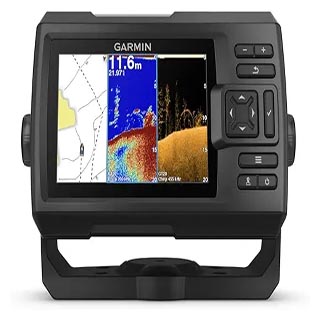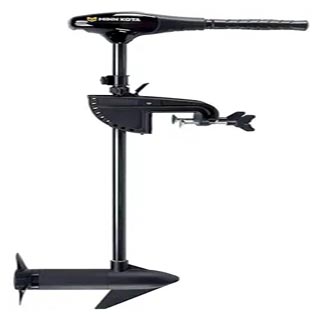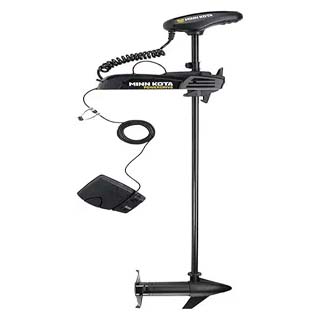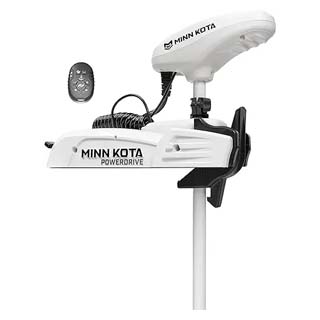Not Just Fishing
Fishing Articles and Information

Question: What kind of resolution is needed to see my lure?
I am in the market for a Fishfinder/GPS combo and am looking at the Lowrance LMS 522C or an
Eagle
502C, but am open to suggestions. I'm told colour is the only way to go now. The lakes I fish in (NW Ontario) rarely reach 200 feet in depth. One of my concerns is
resolution ... my buddy's unit can see his lure ... what kind of resolution is needed for that?
Barry
Answer:
Barry, you are saying that "one of your concerns is resolution". I would say that you have actually four concerns.
These are a
- high power transmitter
- an efficient transducer
- a sensitive receiver
- and last but not least, a high resolution/contrast display
In order to get the most out of your fish finder under all weather and temperature conditions these parts have to work together.
You need the transmitter power to ensure you get the return echo when you're in deep or salt water or when the water conditions are
of poor quality. This is what will give you the fine detail like bait fish, structure or your lure.
Now, having all that power is nice but your transducer has to be able to handle the power coming from the transmitter and then be able
to change it into sound energy without the loss of signal strength and still be able to detect the littlest echo from deep water or
tiny bait fish. This takes a lot of work but you're not done yet.
Your receiver takes all this mass of signals and filters them by dampening the strong ones and boosting the weak ones. It also has to
separate any targets that are close together and put them on the display as separate impulses. I can just imagine what a "Bat" must go
thru.
The resolution you're talking about is your display. This is where everything all the details become crisp and clear.
The detail that you see are made up of picture elements or pixels for short which are just little squares of color that come together to form an image
or shape on your liquid crystal display or LCD for short.
The important part here is that the more pixels per square inch, the more
detail picture you see.
Ok, now you have to factor in "noise" and I'm not talking about the power boat zooming by or someone's stereo cranked way past the point of distortion.
Noise, is just clutter your fish finder is picking up from trolling motors, spark plugs, radio transmitters and
stuff like that. These can for the most part be tuned out by manually adjusting the sensitivity which fine tunes the sonar.
Something
similar to tuning in your car radio once you hit cottage country. Most fish finders today come with some sort of automatic adjustments,
so you can spend more time fishing and less time playing with your fish finder but it is always nice to have the option.
The Lowrance LMS 522C is indeed a powerful unit and has everything you will need in a fish finder.
It also has the FasTrack vertical flasher bar you might want to experiment with. It gives you the readings in real time without all the fish finder signal processing.
I believe your talking about the Eagle SeaCharter 502C which is also a nice unit. This unit has 320V x 240 H pixels compared to the Lowrance which has 480V x 480H pixels. Now, if at this point your only concern is resolution go with the Lowrance.
But ...
before you do I would suggest your take your time and focus on exactly what you want to accomplish with your fish finder.
Consider things like how often your going to use it, how much money you want to spend, do you do any ice fishing, what kind of water conditions, is it easily removable. This is an expensive unit to be dry docked for 6 months of the year.
Hope this doesn't confuse you more.
If you have any questions, just fire away.
Iain Loveman
